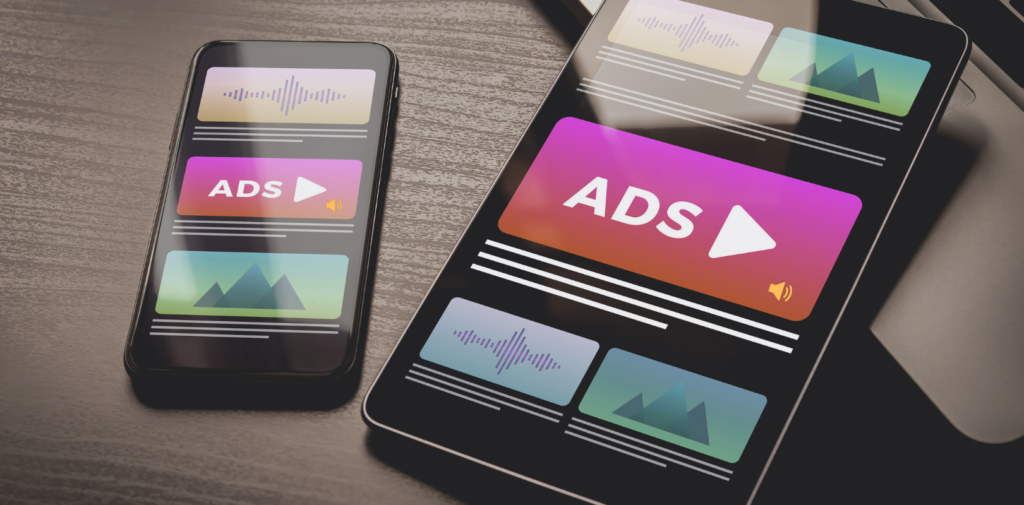The rise of programmatic advertising has changed how media is bought and sold, but one challenge has remained constant: unsold impressions. These remnant ad slots represent missed opportunities, revenue left on the table, and potential that isn’t fully realized. Enter Visual Audio, a transformative technology that turns remnant video impressions into gold for both video publishers and audio advertisers alike. With programmatic audio gaining traction, now is the perfect time to rethink how your remnant video inventory can deliver returns.
Audio and Video: A Perfect Pair
Savvy publishers have long known that one of the primary tactics for minimizing unsold impressions is to diversify media types. For display publishers this has taken the form of offering an array of ad size options for each slot. Historically, video publishers have not had access to a similar tactic.
Visual Audio opens up a multi-format strategy to video publishers by making unsold impressions viable for audio advertisers. Instead of chasing diminishing CPMs from the same pool of video demand, publishers can now offer their unused video inventory to audio buyers seamlessly. No technology changes are needed – most video content is consumed in an audio-on environment.
Publishers don’t need to tweak their systems, integrate new SDKs, or worry about channel conflicts. What was once a lost opportunity is now highly valuable. Publishers can sell this video inventory as an audio product with minimal effort, filling the gap between supply and demand.
According a recent report from the IAB, video and audio continue to show the most promising growth making them a perfect pair. Now, video publishers can maximize value from their unsold inventory by reaching untapped audio buyers.
Unlocking the Potential of Programmatic Audio
A recent report from eMarketer highlighted the increasing adoption of programmatic audio advertising, driven by platforms like Spotify and Pandora. As audio consumption grows, programmatic audio is becoming a more mainstream channel for advertisers.
But traditional audio placements often come with restrictions. Platforms like streaming services and digital radio have limited user pools and walled garden environments, which can make it harder to reach a broad audience. Visual Audio changes the game by opening up massive scale (100,000+ addressable opportunities per second) across a range of placements, including mobile apps, connected TV (CTV), and online video (OLV).
Now, audio advertisers can seamlessly expand their reach beyond these walled gardens. By buying into available video inventory, advertisers can tap into mainstream audience datasets, creating a more holistic and addressable campaign. The high listen-through rates (LTR) offered by Visual Audio, paired with clickable companion banners and interactive elements like QR codes, lead to greater engagement and more measurable outcomes. These are significant improvements over traditional audio ads, which often lack visual hooks and rely on less trackable metrics.
This strategy aligns perfectly with a trend we’ve seen in the industry: audio advertising is now a key component of cross-channel marketing strategies, rather than a standalone offering. Advertisers are looking for more innovative ways to blend audio with visual elements, and Visual Audio delivers just that.
A Perfect Fit for the Mobile and CTV Boom
Another reason to embrace Visual Audio: The continued boom in mobile and connected TV (CTV) consumption. A recent study by Comscore indicates that connected TV and mobile video consumption has seen double-digit growth year-over-year, especially with the rise of streaming services. This trend suggests that more consumers are spending time in audio-on environments, which presents new opportunities for audio and video advertisers alike.
Mobile and CTV users often expect an immersive experience, which makes Visual Audio’s ability to integrate audio ads with engaging visual elements a natural fit. Well-timed audio ads, especially those paired with companion banners or interactive QR codes, can capture user attention in a more organic and less disruptive way.
This shift is aligned with the growing trend of advertisers prioritizing cross-device, cross-channel advertising. With Visual Audio, the boundaries between formats blur even further, providing a consistent, unified experience for users—whether they’re on their mobile phones, CTV, or streaming content online.
No Channel Conflicts, Just Synergy
One uncomfortable truth in programmatic advertising is that there is a finite number of DSPs with a finite number of campaigns. In a sense, all video publishers are fishing from the same pond. New demand channels often come with risks of duplicative supply chains.
Visual Audio solves for this by giving video publishers access to audio-exclusive campaigns. This lack of conflict with popular video demand channels means that publishers can safely add audio advertisers to the mix without devaluing their impressions for video advertisers.
Conclusion
Visual Audio isn’t just another ad product—it’s a revolutionary way to turn unsold impressions into a goldmine for both publishers and advertisers. The benefits are clear: publishers can unlock new revenue streams without operational headaches, while advertisers get access to highly addressable, high-LTR campaigns that are fully measurable.
As programmatic advertising continues to evolve, Visual Audio provides an opportunity to maximize returns on unsold inventory in a way that’s both seamless and scalable.
In the fast-paced world of digital advertising, it’s critical to stay ahead of the curve. Don’t let your unsold impressions go to waste. Harness the power of Visual Audio, turn those missed opportunities into gold, and create a winning strategy for multi-format optimization.

